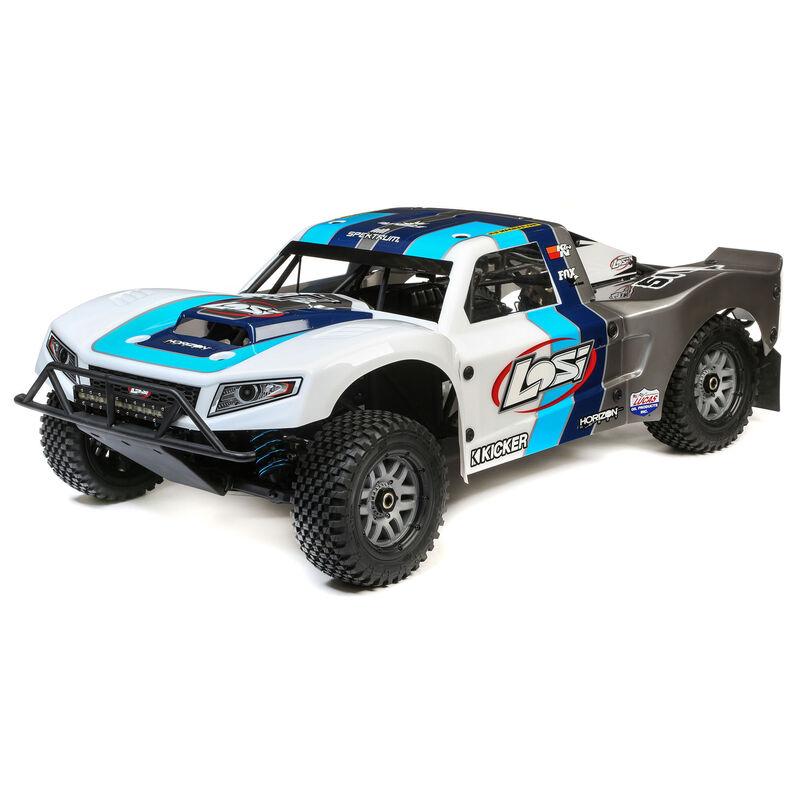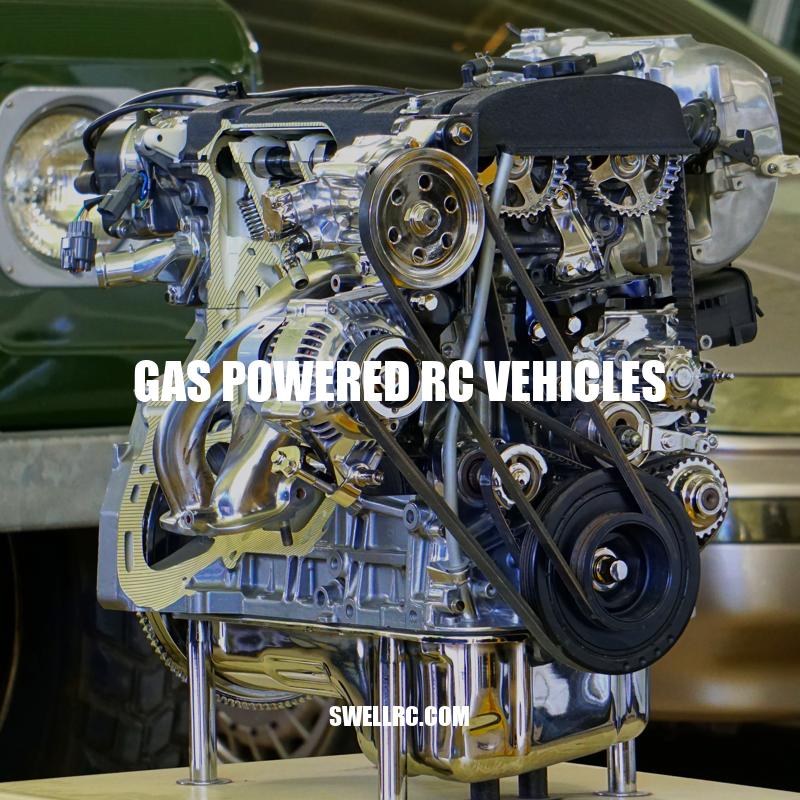Gas Powered RC Vehicles: Types, Fueling, Maintenance, Pros and Cons
Gas-powered RC vehicles are toys that are driven by powerful engines fueled by gasoline. These vehicles are some of the most popular toys for both kids and adults who enjoy remote control vehicles. They come in different sizes and designs ranging from cars, trucks, boats, and airplanes. Gas-powered RC vehicles are well known for their speed, maneuverability, and realistic sound. Gas Powered RC vehicles come in various types including Cars, trucks, airplanes, and boats. Gas-powered cars have high-speed capabilities which can be modified to increase speed and performance. Gas powered trucks are ideal for off-road driving due to their large, sturdy, and flexible wheels. For aviation enthusiasts, the gas-powered plane is ideal for speed and stunts. RC boats come in different shapes and sizes that can be used for racing, cruising, or towing. Gas-powered RC vehicles depend on fuel just like cars. The fuel used is gasoline and oil mixture. This mixture is usually poured into the gas tank through a funnel. The fuel tanks typically last around 20 to 45 minutes depending on the size of the tank and engine size. Fuel consumption is affected by the temperature, terrain, and weight of the vehicle.
Types of Gas-Powered RC Vehicles for Outdoor Fun
Gas powered RC vehicles are popular among hobbyists and enthusiasts who enjoy outdoor activities. They are powered by gasoline engines, which provide them with a lot of power and speed. These vehicles are designed for different activities, including racing and off-road driving. Gas-powered RC vehicles come in different designs that suit different outdoor activities. Here are some of the types of gas-powered RC vehicles:
- Gas-powered cars: These vehicles are designed to look like real cars and are popular among racers. They can reach high speeds of up to 70 mph and come in different sizes, from 1/10 to 1/8 scale.
- Gas-powered trucks: These vehicles are designed to handle off-road terrain and are popular among enthusiasts who enjoy rock crawling and other outdoor activities. They come in different sizes, from 1/10 to 1/5 scale.
- Gas-powered airplanes: These vehicles are designed to fly and are popular among aviation enthusiasts. They are available in different designs, including single-wing, bi-wing, and tri-wing, and can reach high speeds and altitudes.
- Gas-powered boats: These vehicles are designed for water activities and are popular among boating enthusiasts. They come in different types, including speed boats, sailboats, and fishing boats, and can reach high speeds.
Some of the popular brands of gas-powered RC vehicles include Traxxas, HPI Racing, and Losi. These brands offer a range of different vehicles at different price points, from entry-level models to high-end models for experienced hobbyists. Some popular gas-powered RC vehicles include the Traxxas X-Maxx 4WD Monster Truck, the HPI Racing Baja 5T Truck, and the Losi 5IVE-T 2.0 Short Course Truck.
Overall, gas-powered RC vehicles offer a lot of power and speed, making them a popular choice among hobbyists looking for an exciting outdoor activity. With different vehicle designs and models available, there’s something for everyone, no matter what their interests are.

What are some popular brands of gas-powered RC vehicles?
Traxxas, HPI Racing, Losi, and Redcat Racing are some popular brands of gas-powered RC vehicles.
Gas-powered RC vehicles: What you need to know about fueling them.
Gas powered RC vehicles run on a mixture of gasoline and oil. Here’s what you need to know about fueling gas-powered RC vehicles:
Regular gasoline is typically mixed with oil at a 16:1 ratio, while premium gasoline is mixed at a 25:1 ratio. Regular gasoline is easy to find and cheaper, but premium gasoline offers a cleaner burning fuel for higher performance. Synthetic oil, on the other hand, has a recommended mixing ratio of 40:1 to 50:1, creating less exhaust buildup and providing your engine with a longer life.
Interesting Fact: Gas-powered RC cars can reach speeds of up to 100 mph!
When it comes to brands, Traxxas Tmaxx and Losi XL-E2WD are popular and reliable gas-powered RC car options. When buying gasoline, you can choose brands such as Shell V-Power Nitro+ or BP Ultimate for higher performance. Synthetic oils from brands such as Amsoil are also popular choices for gas-powered RC car enthusiasts.

What is the recommended mixing ratio for synthetic oil in gas-powered RC vehicles?
The recommended mixing ratio for synthetic oil in gas-powered RC vehicles is typically 1:40 or 1:50.
Maintaining Your Gas-Powered RC Vehicle
Proper maintenance and repairs are essential to ensure the longevity of gas-powered RC vehicles. Here are some tips to keep your RC vehicle in top shape:
- Regular cleaning of engine, undercarriage, and wheels
- Lubrication of engine components with oil
- Inspection of parts subject to wear and tear like tires, brakes, and suspension
- Periodic replacement of parts as needed
- Using a qualified technician for repairs
Product Recommendation: The Traxxas Maintenance Kit includes everything you need to maintain and care for your gas-powered RC vehicle.

What should be included in a gas-powered RC vehicle maintenance kit?
Typically, a gas-powered RC vehicle maintenance kit should include items such as air filters, oil filters, fuel filters, spark plugs, lubricants, cleaning brushes, and a tool kit for basic repairs.
Considerations for Gas-Powered RC Vehicles
Gas-powered RC vehicles have their pros and cons. Here are some things to consider: Pros of gas-powered RC vehicles include high speed capabilities, realistic engine sound, and longer runtime. However, there are also some cons associated with this type of RC vehicle, such as expensive maintenance costs, high noise production, and air pollution.
If you’re looking for an alternative to gas-powered RC vehicles, the Redcat Racing Everest-10 Electric Rock Crawler is a great option. This electric RC vehicle is quieter, more environmentally friendly, and requires less maintenance than gas-powered RC vehicles. Plus, it still offers high-speed capabilities and realistic sounds.
Overall, whether you choose a gas-powered RC vehicle or an electric one, there are pros and cons associated with each. Consider your priorities and preferences before making a decision, and always take safety precautions when operating these vehicles.

What are the pros and cons of electric RC vehicles?
Pros of electric RC vehicles include quiet operation, clean energy, and lower operating costs. Cons include shorter run times, longer charging times, and decreased power compared to gas-powered models.
Gas powered RC vehicles are loved by enthusiasts of all ages and skill levels. They offer an exciting and realistic driving experience that can’t be found with other remote control toys. The high speed and maneuverability of gas-powered RC vehicles make them perfect for racing and performing stunts. The realistic engine sounds also add to the immersive experience.
Despite their positives, gas-powered RC vehicles come with some disadvantages. They produce high noise levels that can be disruptive to neighbors or the environment. They also contribute to air pollution due to the emissions released. Maintenance costs can be high, and owners must ensure their vehicles are well taken care of for longevity.
However, with the right considerations, gas-powered RC vehicles can be a worthwhile investment. They are perfect for anyone looking for a thrilling hobby that offers speed and excitement. The different types of gas-powered RC vehicles available mean there’s something for everyone, whether it be cars, trucks, planes, or boats.
Ultimately, gas-powered RC vehicles are an excellent way to spend free time for adventure-loving individuals. With proper care and maintenance, they can offer hours of enjoyment. So go ahead and choose your favorite gas-powered RC vehicle and enjoy the rush of control and power!



